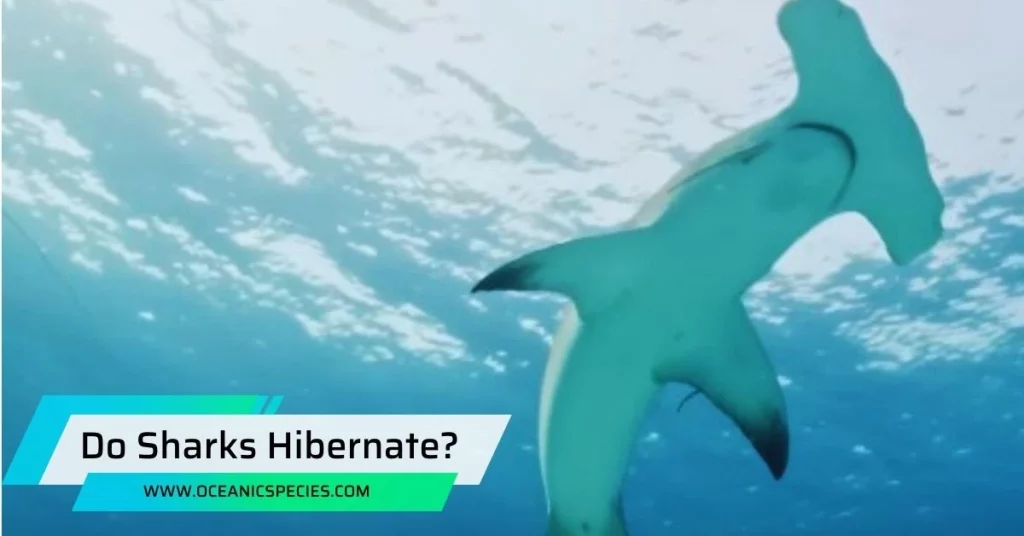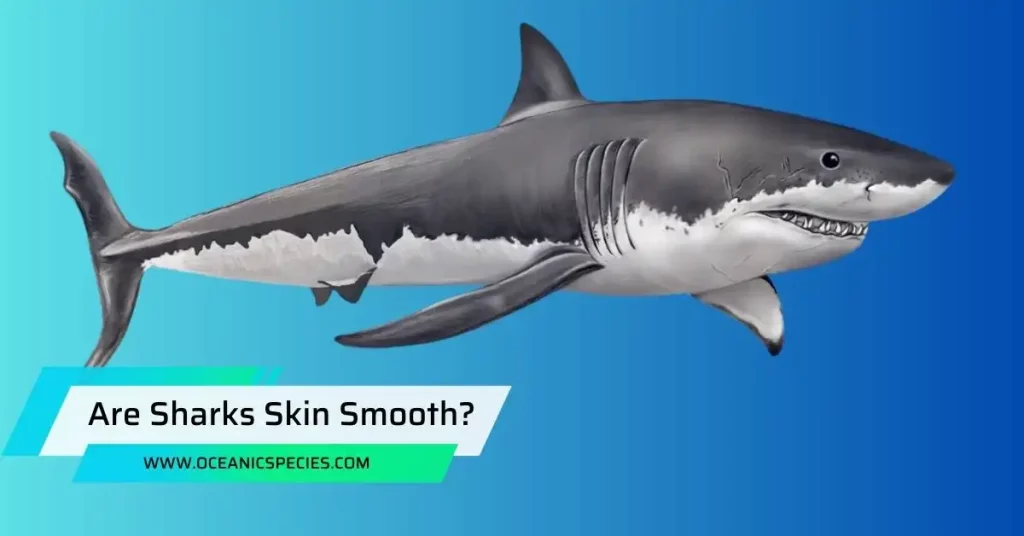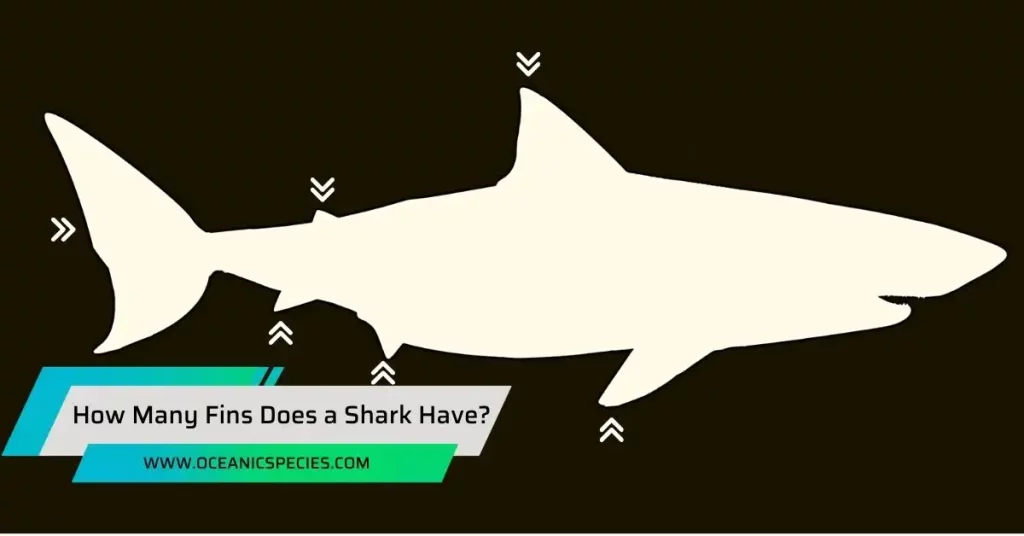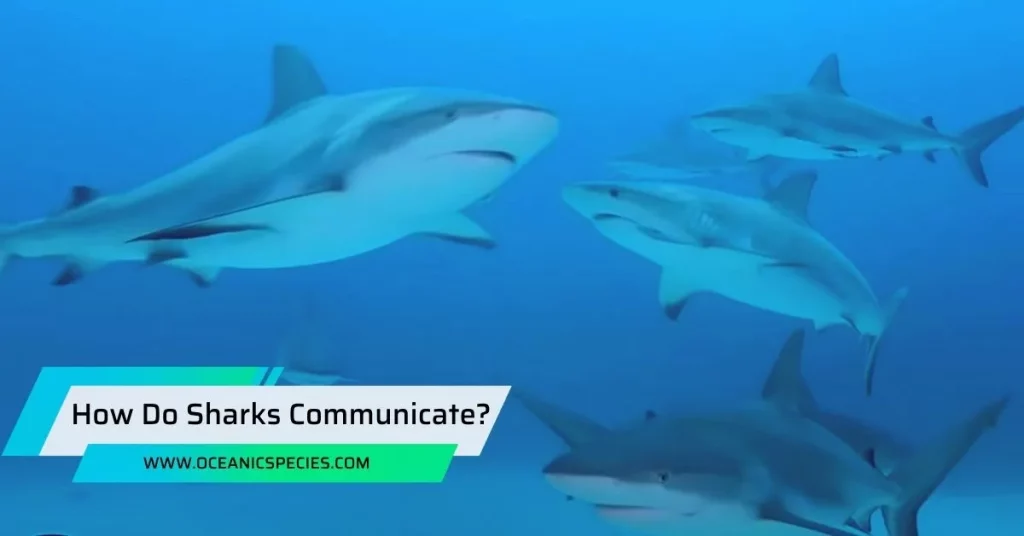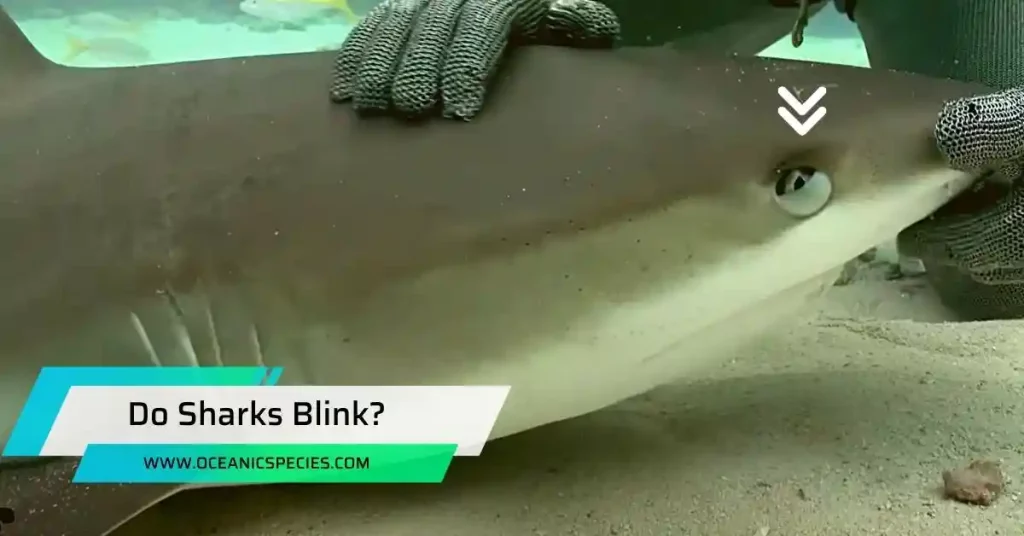No, sharks do not hibernate. Sharks are cold-blooded animals that do not undergo true hibernation.
However, they do enter a state called torpor, where their activity levels decrease in response to changes in their environment, such as temperature or availability of food. Sharks are fascinating creatures that have captured the curiosity of humans for centuries.
With their sleek bodies and sharp teeth, they are known as apex predators of the oceans. Many people are curious about the behavior of sharks, including whether they hibernate. While some animals, like bears, spend months in hibernation to conserve energy during the winter, sharks do not hibernate in the same way.
This article will delve into the topic of shark hibernation, explaining why sharks do not hibernate but instead enter a state called torpor. We will also explore other interesting facts about shark behavior. So, let’s dive in and learn more about these incredible creatures!
The Basics Of Shark Hibernation
One intriguing aspect of Sharks’ lives is the concept of hibernation. In this section, we will explore the basics of shark hibernation, including what it is, how it differs from other forms of dormancy, and the seasonal patterns associated with it.
What Is Shark Hibernation?
Shark hibernation, also known as torpor, is a state of decreased activity and metabolism that some shark species enter during periods of colder water temperatures or reduced food availability. During this time, sharks slow down their bodily functions to conserve energy and survive unfavorable conditions.
Here are some key points to understand about shark hibernation:
- Sharks enter hibernation primarily in response to environmental cues such as changing water temperatures. This behavior allows them to adapt to their surroundings and ensure their survival.
- Unlike mammals that experience deep, prolonged hibernation, sharks typically undergo a more moderate form of torpor. They remain partially active and able to swim, albeit at a slower pace.
- During hibernation, sharks may seek out warmer, well-oxygenated waters, such as coastal areas or deeper depths, to support their reduced metabolism.
Distinctions Between Shark Hibernation And Other Forms Of Dormancy
While shark hibernation shares similarities with other types of dormancy observed in animals, there are distinct differences that set it apart. Here are a few key distinctions to note:
- Shark hibernation is more accurately classified as “torpor” rather than true hibernation. This is because sharks maintain some level of activity and are not completely dormant like animals that experience deep hibernation.
- Unlike mammals that store fat reserves to sustain them through extended periods of dormancy, sharks rely on their highly efficient metabolism and the ability to conserve energy in other ways during torpor.
- Other forms of dormancy, such as hibernation in mammals or brumation in reptiles, are often triggered by a lack of food. In contrast, shark hibernation is influenced by both temperature changes and food availability.
The Seasonal Patterns Of Shark Hibernation
Shark hibernation follows distinct seasonal patterns, depending on the species and their geographical location. These patterns are influenced by various factors such as water temperature and prey availability. Here are some important points to consider about the seasonal patterns of shark hibernation:
- In temperate regions, sharks often hibernate during the winter months when water temperatures drop. This coincides with a decreased availability of prey and allows sharks to conserve energy during this period of lower food abundance.
- In tropical regions, certain shark species may exhibit a form of hibernation during the dry season, when water temperatures may rise excessively, and food sources may become scarce.
- Some sharks may also enter a state of torpor during migration to conserve energy during long journeys.
- It’s worth noting that not all shark species hibernate. Some are more migratory in nature, while others are active throughout the year.
Factors Influencing Shark Hibernation
In this section, we will explore the factors that influence shark hibernation, shedding light on the intricate workings of these remarkable apex predators.
Water Temperature: A Pivotal Factor
Sharks are ectothermic creatures, meaning their body temperature is determined by the surrounding environment. As water temperature drops, their metabolism slows down, allowing them to conserve energy during colder periods. Different shark species have varying thresholds for hibernating based on water temperature. Shark hibernation patterns are closely correlated with the seasonal changes in water temperature. As winter approaches, colder water temperatures prompt many shark species to seek deeper, warmer waters where they can slow down their bodily functions and conserve energy.
Photoperiod: The Impact Of Light On Shark Hibernation
The photoperiod, or the duration of light exposure, plays a significant role in shark hibernation patterns. As the days grow shorter during the winter months, the decreased sunlight triggers hormonal changes in sharks, signaling the need to conserve energy. Reduced daylight hours can cause a decrease in feeding opportunities for sharks, as it affects the behavior and distribution of their prey. This scarcity of food resources further encourages sharks to enter a state of hibernation. Light availability also affects the reproduction and mating behaviors of sharks. Some species may use specific photoperiod cues to time their reproductive activities, which can influence their hibernation patterns.
Food Availability: How It Affects Shark Hibernation
Food availability is a crucial factor influencing shark hibernation. As water temperatures drop and prey distribution changes, the availability of food sources diminishes, prompting sharks to enter a state of hibernation. Sharks have highly efficient metabolisms, but even they need to balance their energy expenditure with available food resources. Decreased feeding opportunities during colder months provide a motivation for sharks to become dormant and conserve their energy reserves.
Some species of sharks may undertake long-distance migrations to reach regions with abundant prey resources, allowing them to survive without hibernation. These migrations demonstrate the significant role food availability plays in shaping shark hibernation patterns.
Understanding The Physiology Of Shark Hibernation
One intriguing aspect of shark behavior is whether they hibernate or undergo periods of inactivity. To understand this phenomenon, it is crucial to delve into the physiology of shark hibernation.
Metabolic Changes During Hibernation
During hibernation, sharks experience significant metabolic changes that allow them to conserve energy and survive in periods of limited food availability. Some key points to understand about the metabolic changes in hibernating sharks are:
- Metabolism slows down, leading to a decrease in energy expenditure
- Oxygen consumption and heart rate decrease significantly
- The production of metabolic waste products is reduced, aiding in energy conservation
Reduction In Activity Levels And Energy Requirements
When sharks hibernate, they reduce their activity levels and energy requirements to a minimum. Here are some important factors to consider:
- Hibernating sharks become less mobile, conserving energy by minimizing unnecessary movement
- They exhibit reduced swimming and hunting behaviors, instead relying on stored energy reserves
- Hibernating sharks can survive for extended periods without consuming food due to their lowered energy requirements
Unique Physiological Adaptations In Hibernating Sharks
Sharks possess unique physiological adaptations that allow them to thrive during periods of hibernation. These adaptations play a vital role in their ability to survive under harsh conditions. The following are some key points to note:
- Sharks have the ability to regulate their body temperature, enabling them to withstand colder waters during hibernation
- Some species of sharks possess specialized organs, known as the rectal gland, that help regulate salt levels in their bodies
- With their streamlined bodies and sharp teeth, sharks are well-adapted hunters, even during hibernation when their activity levels are reduced
Migration Versus Hibernation: Clarifying The Confusion
While hibernation and migration are both fascinating behavioral adaptations seen in creatures around the world, it’s important to differentiate between the two when it comes to sharks.
Differentiating Between Shark Migrations And Hibernation
Shark migrations:
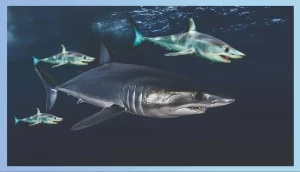
Sharks are known to travel vast distances in search of food, mating opportunities, or more favorable environmental conditions. Migration patterns vary between species and regions, but many sharks undertake regular seasonal movements, often over long distances. These migrations may be influenced by changing temperatures, availability of food, or reproductive needs. Some species, such as the great white shark, are renowned for their impressive migrations, covering thousands of miles across oceans. Migration allows sharks to follow prey, mate, or find suitable environments, thus ensuring their survival and long-term genetic diversity.
Shark hibernation:
Unlike certain mammals that enter a state of deep sleep during hibernation, sharks do not hibernate in the traditional sense. Sharks are ectothermic, meaning their body temperature is regulated by the surrounding water rather than by internal processes. In colder waters, some shark species have adaptations that allow them to minimize metabolic activity, conserving energy during periods of reduced prey availability. This state, known as torpor or lethargy, is not considered true hibernation as it does not involve a prolonged decrease in body temperature or complete inactivity. Sharks in torpor remain somewhat active and are capable of movement, albeit at a much slower pace.
Overlapping Behaviors: When Migration And Hibernation Converge
In certain instances, shark migration and hibernation-like behaviors can overlap, leading to some confusion. Here are a few examples:
Vertical migration:
Some shark species exhibit vertical migration, wherein they travel between the surface and deeper waters on a daily or seasonal basis. During winter, these sharks may move to deeper, warmer waters, resembling hibernation in terms of time spent in less active states. As temperatures rise, they migrate back to shallower waters to resume their usual activities.
Aggregations and resting:
Sharks often aggregate in specific regions known as “shark nurseries” or “shark cleaning stations” for various reasons, including mating, birthing, or feeding. These aggregations can give the impression of sharks hibernating in one particular area for extended periods, but it is more likely a temporary behavior driven by specific ecological factors.
Reduced activity in captivity:
In some cases, sharks kept in captivity may exhibit behaviors resembling torpor due to limited space, decreased stimuli, or variations in feeding schedules. This reduced activity can create a perception of hibernation-like behavior, but it is an adaptation to the captive environment rather than a natural occurrence.
Environmental Implications Of Shark Hibernation
In this section, we will explore the environmental implications of shark hibernation, focusing on how understanding their hibernation patterns can benefit conservation efforts.
Environmental Conservation Benefits Of Understanding Shark Hibernation
Sharks play a crucial role in maintaining the balance of marine ecosystems. By understanding their hibernation patterns, scientists and conservationists can gain valuable insights into the behavior and needs of these apex predators. Here are some key points about the environmental conservation benefits of understanding shark hibernation:
- Preservation of critical habitats: Knowledge about when and where sharks hibernate can help identify and protect critical habitats necessary for their survival. This understanding allows conservationists to designate and preserve specific regions as important shark hibernation sites.
- Effective conservation strategies: Understanding shark hibernation patterns enables the development of targeted conservation strategies. By identifying areas where sharks hibernate, conservation efforts can focus on monitoring and protecting those regions during their dormant periods.
- Species-specific conservation efforts: Different shark species have varying hibernation behaviors. Some sharks may exhibit true hibernation, while others may go through periods of reduced activity or migrate to warmer waters during the winter months. By studying these patterns, conservationists can tailor their efforts to the specific requirements of each species, leading to more effective conservation outcomes.
- Improvement of population assessments: Accurately estimating shark populations is crucial for conservation initiatives. By considering hibernation patterns, scientists can factor in periods of reduced activity when conducting population assessments. This leads to more accurate population estimates and helps in determining the success of conservation efforts.
Conservation Strategies Influenced By Hibernation Knowledge
The knowledge gained from understanding shark hibernation can directly influence conservation strategies aimed at protecting these majestic creatures. Here are some key points about how hibernation knowledge can influence conservation strategies:
- Protected area designations: Information about shark hibernation sites can inform the designation of protected areas, such as marine protected areas or sanctuaries. These designations provide important safeguards for hibernating sharks and the ecosystems they rely on.
- Regulation of fishing practices: Understanding shark hibernation patterns can help inform regulations on fishing practices. By identifying areas and times when sharks are most vulnerable during hibernation, conservationists can recommend fishing restrictions and enforce measures to reduce accidental bycatch.
- Educational outreach: Hibernation knowledge can serve as a valuable tool for educational outreach programs. By sharing this information with the public, conservation organizations can raise awareness about the importance of shark conservation and garner support for their initiatives.
- Collaborative research efforts: The understanding of shark hibernation can facilitate collaboration between scientists, conservation organizations, and government agencies. By sharing data and insights, these stakeholders can work together to develop comprehensive conservation strategies that take into account the hibernation needs of sharks.
Shark Hibernation Patterns Across Species
In this section, we will explore the hibernation patterns across different shark species, including the well-known great white sharks and hammerhead sharks, as well as some lesser-known species.
Hibernation Tendencies In Great White Sharks
Great white sharks do not actually hibernate in the traditional sense. Instead, they exhibit a behavior called “tonic immobility,” where they enter a state of natural paralysis. During tonic immobility, great white sharks become docile and calm, allowing researchers to study them more closely. This behavior is often observed when great white sharks are turned upside down, inducing a state of trance-like immobility. It is believed that tonic immobility may serve as a form of stress relief for these apex predators.
Exploring The Hibernation Habits Of Hammerhead Sharks
Hammerhead sharks also do not engage in hibernation as mammals do. However, they have been found to exhibit migratory patterns that resemble hibernation to some extent. Hammerhead sharks often travel in large groups, or schools, during their migration. During their migrations, hammerhead sharks may exhibit reduced activity and slower swimming speeds, similar to how hibernating animals conserve energy.
Lesser-Known Shark Species And Their Hibernation Patterns
While great white sharks and hammerhead sharks garner much of the attention, there are numerous lesser-known shark species with interesting hibernation patterns. For example, the nurse shark, a bottom-dwelling species, is known to seek out warm, shallow waters for hibernation during the colder months.
The bull shark, on the other hand, is highly adaptable and can tolerate a wide range of temperatures. This allows them to remain active year-round, without the need for hibernation. Additionally, the greenland shark, found in the icy waters of the arctic, has been found to have an extremely slow metabolism, allowing it to survive in the cold for extended periods.
Climatic Factors And Changing Hibernation Patterns
When it comes to hibernation, many people wonder if sharks participate in this behavior. While sharks do have periods when they are less active, they do not hibernate in the traditional sense like bears or some other animals.
However, the changing climatic conditions caused by global warming have begun to affect the behavior and patterns of sharks, including their periods of reduced activity. Let’s explore how climate change is impacting shark hibernation patterns.
Disrupted Hibernation Cycles And Potential Consequences
The rising temperatures of the oceans due to climate change are disrupting traditional migration patterns and behaviors of various marine species, including sharks. Sharks typically have periods of reduced activity during colder seasons when the availability of food decreases. However, as ocean temperatures continue to rise, these colder periods are becoming shorter and less pronounced. This disruption in hibernation cycles can have significant consequences for shark populations and marine ecosystems. Here are some potential effects:
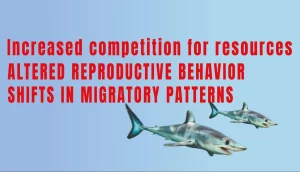
- Increased competition for resources: As sharks experience shorter periods of reduced activity, they may have to compete more intensely for limited food sources, leading to imbalances in marine food webs.
- Altered reproductive behavior: Hibernation has an impact on sharks’ reproductive cycles, and changes in hibernation patterns can affect their breeding and reproductive success.
- Shifts in migratory patterns: Changing hibernation patterns may also lead to shifts in the timing and routes of shark migration, which can have consequences for the ecosystems they inhabit.
The Future Of Shark Hibernation Research
Let’s explore the key points and technological advancements aiding this field of study.
Technological Advancements Aiding Hibernation Research
- Satellite tagging: Scientists have leveraged satellite tagging technology to gain valuable insights into the movements and behaviors of sharks. By attaching satellite tags to the dorsal fin of sharks, researchers can track their movements, diving depths, and temperature preferences. This data helps in identifying potential hibernation sites and understanding the behavior of sharks during the hibernation period.
- Biologging devices: Advancements in biologging devices have revolutionized the study of shark hibernation. These sophisticated devices are capable of recording a wide range of data, including temperature, body movements, and heart rate. Biologging devices provide researchers with in-depth information about the physiological changes that occur during hibernation, further enhancing our understanding of this unique phenomenon.
- Environmental dna (edna) analysis: Edna analysis is an emerging technique that allows scientists to detect the presence of species by analyzing the dna they leave behind in their environment. This non-invasive approach is proving to be a valuable tool in studying shark hibernation. By collecting water samples from potential hibernation sites and analyzing the edna, researchers can confirm the presence of hibernating sharks without disturbing them.
- Underwater monitoring systems: Developing advanced underwater monitoring systems has been crucial in studying shark behavior. These systems utilize cameras, hydrophones, and other sensors to collect data on shark activity and habitat utilization during hibernation. The information collected from underwater monitoring systems helps scientists identify patterns, such as preferred hibernation locations and potential impacts of environmental changes on shark hibernation.
The Importance Of Continued Research On Shark Hibernation
- Conservation implications: Understanding shark hibernation is vital for the conservation of these apex predators. Researching their hibernation patterns can help identify critical habitats and ensure their protection. It can also shed light on the potential effects of climate change and human activities on shark populations, allowing for better management and conservation strategies.
- Insights into evolutionary biology: Shark hibernation research can provide valuable insights into the evolutionary history of sharks. By unraveling the mechanisms and adaptive strategies behind hibernation, scientists can gain a deeper understanding of how these ancient creatures have survived for millions of years. This knowledge can further our understanding of other animals’ hibernation strategies and potentially lead to new discoveries in evolutionary biology.
- Medical applications: The unique physiological changes that occur during shark hibernation hold immense potential for medical research. By studying the metabolic and physiological adaptations of hibernating sharks, scientists may uncover new insights that could be applied to human medicine. This could lead to advancements in areas such as organ preservation, wound healing, and even cryogenics.
Frequently Asked Questions
Do Sharks Hibernate During Winter?
No, sharks do not hibernate during winter. They are active all year round, even in colder temperatures.
How Do Sharks Stay Warm In Cold Waters?
Sharks have a unique system called countercurrent heat exchange that helps them regulate their body temperature in cold waters.
Do Sharks Sleep?
Yes, but sharks do not sleep like humans. They enter a state known as “restful immobility” where they remain still but remain alert.
What Do Sharks Eat?
Sharks have a varied diet that includes fish, seals, turtles, and even smaller sharks. Some species are also known to feed on plankton.
Can Sharks Survive In Freshwater?
Some sharks, like bull sharks, are known to survive in freshwater and can even be found in rivers and lakes. However, most shark species primarily live in saltwater.
Conclusion
Summing up, sharks do not hibernate in the traditional sense like bears or other mammals. However, they do exhibit certain behaviors that can be compared to hibernation. During periods of food scarcity or cold water temperatures, some shark species enter a state known as torpor, where their metabolic rate slows down to conserve energy.
This allows them to survive in harsh conditions and maintain their vital functions. While torpor is not the same as hibernation, it serves a similar purpose for sharks. It is fascinating to learn about the unique adaptations that sharks have developed over millions of years to thrive in their marine environment.

